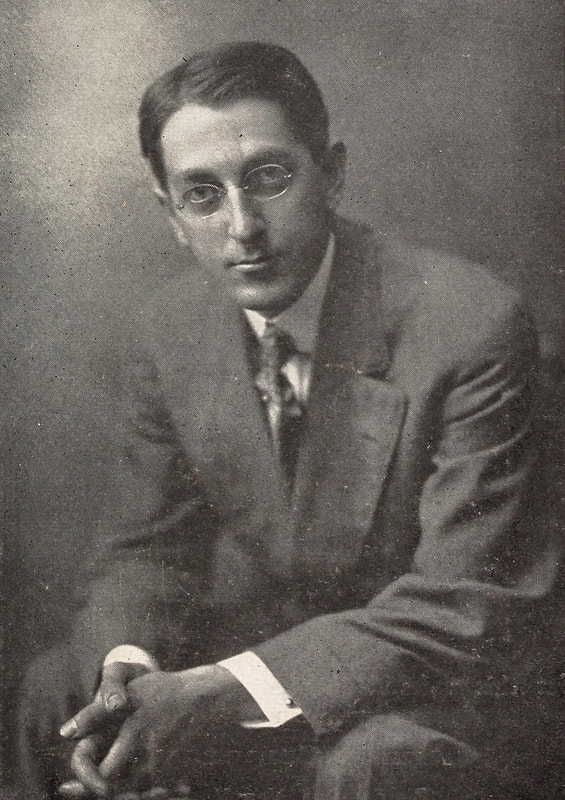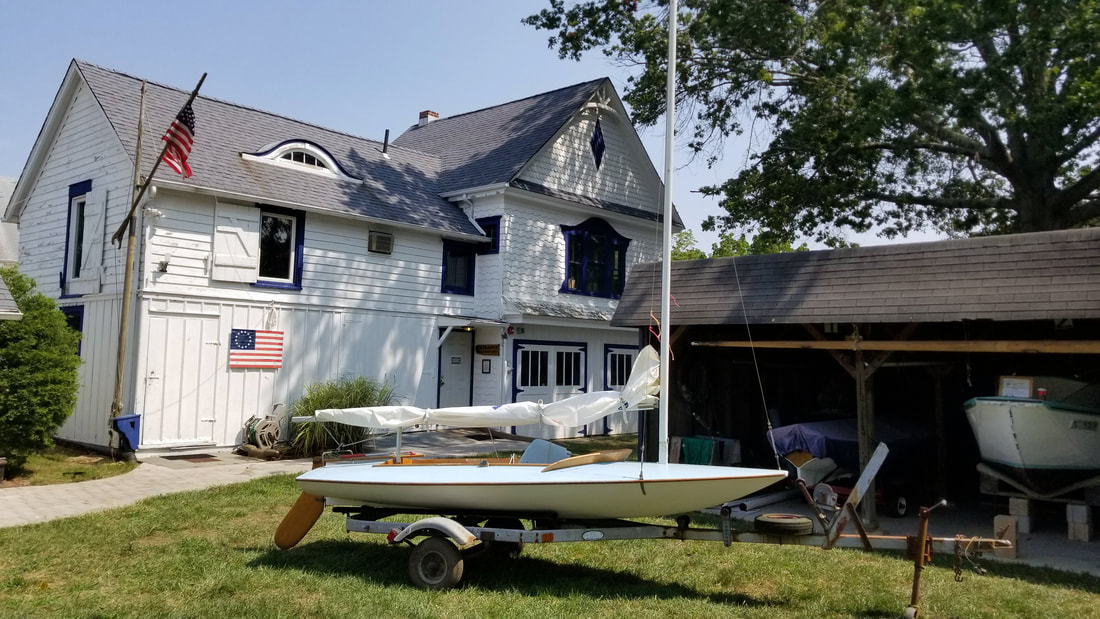|
Enjoy this 1921 piece by Seaside Park Yacht Club member, William Shewell Ellis, a known photographer and sailor who first had this published in the August 1921 issue of Yachting. It was later reproduced in full by the New Jersey Courier, Toms River's weekly newspaper.
There is a stretch of inland waterway on the New Jersey coast, starting from Bay Head and extending through the most varied and picturesque sailing waters over a distance of 100 miles to Cape May, that is but little known to the average cruising yachtsmen, unless he is lucky enough to have summered down those waters.
An indescribable charm pervades these waterways. While summer colonies are becoming more and more numerous, yet the larger part of this stretch of beach that separates the bay from the ocean is as wild and rugged as in the days of Captain Kidd. It is an ideal cruising ground for a boat, either power or sail, drawing not over four feet. The government has completed a well-marked channel of six feet depth and is dredging a canal through from Bay Head to Point Pleasant, which will give an outlet into the Manasquan River and open Manasquan Inlet for the use of pleasure and fishing boats. At the present time, boats can get into the bay from the ocean through Barnegat Inlet. In their delightful story called Cruises, Robert and George Barrie pay a just tribute to these waters: “If the Englishman had Barnegat,” they say, “he would have painted it, and written books about it, and gloated over it as he has the Norfolk Broads. But in our great wealth of cruising grounds, it is almost entirely overlooked.” As a small boy, I was initiated by my father into this greatest of “Fraternal Orders,” cruising, my first cruise being in a sneak-box which leaked so badly that I woke in the night soaked to the skin—but little did that matter out in that great bay with the sky full of stars, where I could dream dreams. I could almost see those ships of Captain Kidd coming over the bar at Barnegat and sailing up old Toms River. Even to this day, it is held that some of Kidd's loot is buried on Money Island. If one starts his crews at Bay Head, at the north end of Barnegat Bay, he will find good stores to supply his needs and excellent water to fill his tanks, while at the Bay Head Yacht Club every courtesy will be extended to him. This is the logical place to start from if coming from the northward. My cruising on the bay is done in the Savola, a 40-foot yawl with auxiliary engine, drawing four feet of water. This is the easiest type of one-man boat, on my crew usually consisting of “Snooks,” who is not only a good Frau but a splendid cook, and “Babs,” who has had her first year at college. With a small sailing dory which we tow when under way, we explore the narrow winding creeks and coves which make the shores of the bay so attractive. A pleasant day can be spent sailing up the Metedeconk River. As the river is quite shallow, it is necessary to navigate most of the way in the dory. Well-kept farms run down to the river banks. Milk and fresh vegetables are always available at most moderate prices. We were caught there without food one holiday when stores were closed. I found a farmer enjoying a siesta in a hammock, and when he heard our plight, he obligingly supplied us out of his truck garden and hen house. Following the coast channel down through the drawbridge at Mantoloking, the bay gradually widens into a fine expanse of sailing water. Summer colonies are spread along the narrow stretch of beach—Chadwicks, Lavallette, Ortley and Seaside Park. Before the War of 1812, Old Cranberry Inlet penetrated this beach somewhere between Seaside Park and Ortley. A great deal of shipping then came into the inlet and sailed up to the town of Toms River, using the northern course around Island Heights, which is now almost entirely dry. This inlet also made a good anchorage and afforded a safe harbor for American privateers on the lookout for British ships during the Revolution. In one of the old histories of the Jersey coast we find that when cranberry inlet closed, Michael Ortley attempted to cut a new inlet near the head of Barnegat Bay. This work had no sooner been completed than a storm came and closed it again. After leaving Mantoloking the channel lies toward the west shore. The green meadow land runs back to the pine woods; Kettle Creek and Mosquito Cove are quite wild. During the autumn and winter, this is a favorite feeding ground for black duck, and there is splendid crabbing in the summer. Passing through a jack-knife drawbridge one comes to the mouth of Toms River. With five to eight feet of water you can sail from shore to shore, avoiding Long Point, a narrow sandbar jutting out just before you come into view of Island Heights. This is an ideal harbor and is a delightful place to spend as much time as one can spare. The Island Heights Yacht Club always has a hearty welcome and there are good stores in the village. If you are fortunate enough to be there on race day, you will also see some good racing. Sailing on up through the drawbridge, there is plenty of water into what is called the “town dock” of Toms River, one of the most delightful old towns in this part of the country. In the days before the inlet at Berkeley was closed, large sailing craft came into this port with shipments of coal and other merchandise. This is what is known as the Jersey Health Belt, and many of the houses are occupied both winter and summer. Following the channel on the west shore, you pass through Barnegat drawbridge, keeping well to the main shore. If you want a quiet harbor for lunch or a swim, run into Cedar Creek. It is an easy sail from here to Barnegat Inlet, where a harbor for the night can be made in back of Sedge Island. One may anchor a few hundred yards from the sand dunes and old gnarled cedars, which separate the bay and the Atlantic Ocean, and can hear the break of the surf and see faithful old Barnegat Light flashing its rays many miles out to sea. Before it is too dark, go over on the sand flats in hip boots, or,better still, no boots at all, dig a pailful of soft clams, and steam them for supper with fried fish and bacon. The next day, take an early mornings swim, breakfast, and then go for a few hours fishing in the Inlet—weakfish, bluefish and bass are abundant here in season and you will usually get good sport. The Coast Guards here are always glad to see you, and a finer type of men it is hard to find. In one way they are different from most men one meets—for they are happy when you are in trouble, for then they can be of service to you. Just get caught in the Inlet in a heavy sea, and have your dory come aboard over your stern on a following wave and smash your jigger mast to bits, as happened to us last summer! Before we had dropped anchor in the inner harbor, the Guards were alongside in their big powerboat, ready to render aid. And if you want to read thrillers, don't buy fiction, but just get a copy of the Annual Report of the U.S. Coast Guard Service issued by the government. If you want an exciting sail, run out of Barnegat Inlet at flood tide. The black buoys mark the way over the bar. There is always a sea running on the bar and you are pretty nearly sure of picking up a bluefish or two on the way, if you troll with a squid. Sailing back again toward the mainland, the hotel at Waretown will soon be picked up. In the “good old days” before the 18th Amendment, this was the starting point for many a fishing party when fishing was not the sole object in view. But this is now but a memory, and, bidding farewell to this good old landmark, we steer a zig-zag course for Harvey Cedars. This is a good place to spend the night, especially if one is acquainted with any of the big political guns who have a most delightful clubhouse at this point. On leaving Harvey Cedars, follow a narrow, well-marked channel through what is known as “the Bonnet.” The channel passes through two drawbridges and soon enters Little Egg Harbor Bay. Beach Haven is a well-known summer resort, and the surrounding waters are well filled with fish and crabs. Clams or soft crabs are used for bait and can be bought from baitmen on the fishing grounds. A sail almost directly across the Bay will bring you to the mouth of the Tuckerton Creek. This is a very deep channel cut through the meadows and leads to the wharf of the old town at Tuckerton. This town is much like Gloucester and the fishing villages of Cape Cod. Enjoyed this article? Please consider making a one-time or recurring donation today!
Your donations support preserving and restoring our shared maritime heritage on the waters of Toms River and Barnegat Bay, through our boat workshop, educational programs and special events. Thank you.
Open Tuesdays, Thursdays, Saturdays - 10 am to 2 pm
78 East Water Street, Toms River, NJ 08753 Guided Tours By Request - New Members Always Welcome (732) 349-9209 - [email protected] Comments are closed.
|
NEWSArchives
May 2024
Categories |
OPEN TUES/THURS/SAT 10 to 2
Barnegat Bay Maritime MuseumVertical Divider
|
Upcoming EventsVertical Divider
|
|
© Barnegat Bay Maritime Museum. All rights reserved.





 RSS Feed
RSS Feed
